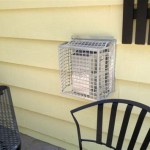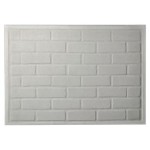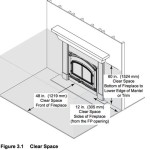Gas Fireplace vs. Small Wood Stove: A Comprehensive Comparison
Home heating options have evolved significantly, offering consumers more choices than ever before. Two popular alternatives, often considered for their efficiency and aesthetic appeal, are gas fireplaces and small wood stoves. Both provide supplemental heat, adding warmth and ambiance to a living space. However, they differ substantially in their operation, fuel source, maintenance requirements, and overall environmental impact. This article will provide a detailed comparison between gas fireplaces and small wood stoves, focusing on key factors to help homeowners make informed decisions.
Heating Efficiency and Performance
Heating efficiency is a paramount concern for many homeowners, especially when seeking alternatives to central heating systems. Gas fireplaces typically boast high efficiency ratings, often exceeding 70% for newer models. This means that a significant portion of the gas consumed is converted into usable heat. The actual efficiency can depend on factors such as the fireplace design, whether it is vented or ventless, and the quality of the installation. Ventless gas fireplaces, while seemingly more efficient as they release all combustion byproducts directly into the room, require carefully controlled ventilation to maintain safe air quality.
Small wood stoves, on the other hand, can have varying efficiency levels. Older, non-EPA certified stoves tend to be less efficient, often converting less than 50% of the wood's energy into heat. Modern, EPA-certified wood stoves are designed with advanced combustion technologies that significantly improve efficiency, sometimes reaching levels comparable to gas fireplaces. These stoves incorporate features like secondary combustion chambers and catalytic converters to burn off more of the smoke and gases produced during wood burning, leading to a cleaner and more efficient burn.
The heat output of both gas fireplaces and small wood stoves is measured in British Thermal Units (BTUs). The required BTU output for a particular space depends on factors such as the room size, insulation levels, and climate conditions. Both types of appliances are available in a range of BTU outputs, allowing homeowners to select a model that suits their specific heating needs. It is important to consider that the heat from a wood stove is generally more radiant, providing a direct and intense warmth that can be felt even at a distance. Gas fireplaces often produce a more convective heat, warming the air around the appliance and circulating it throughout the room.
Fuel Source and Cost
The fuel source is a fundamental difference between gas fireplaces and small wood stoves, impacting both the operational cost and the environmental considerations. Gas fireplaces rely on either natural gas or propane. Natural gas is generally less expensive than propane, but its availability depends on the location and existing infrastructure. Propane is a more versatile option as it can be stored in tanks and delivered to homes without access to a natural gas pipeline. However, propane typically costs more per BTU than natural gas, leading to higher heating costs.
Wood stoves obviously utilize wood as their fuel source. The cost of wood can vary significantly depending on the region, the type of wood, and whether it is purchased as seasoned firewood or harvested independently. Seasoned firewood, which has been dried for at least six months, burns more efficiently and produces less smoke than green wood. Harvesting wood oneself can significantly reduce fuel costs, but it requires labor and access to suitable timber resources. The cost-effectiveness of wood as a fuel source also depends on the efficiency of the wood stove and the amount of heat required.
Beyond the direct cost of the fuel, there are other expenses to consider. Gas fireplaces require a connection to a gas line or propane tank, which may involve installation costs. Wood stoves require a chimney or flue for venting the smoke and gases, and the installation of a chimney can be a substantial expense. Both types of appliances require periodic maintenance and cleaning, which can incur additional costs over time.
Environmental Impact and Emissions
The environmental impact of heating appliances is an increasingly important consideration for homeowners. Gas fireplaces burn fossil fuels, releasing greenhouse gases such as carbon dioxide into the atmosphere. The amount of emissions depends on the efficiency of the fireplace and the type of gas used. Natural gas produces less carbon dioxide per BTU than propane, making it a slightly more environmentally friendly option. However, the extraction and transportation of natural gas can also contribute to methane emissions, which is a potent greenhouse gas.
Wood stoves, while utilizing a renewable resource, can also have a significant environmental impact. Burning wood releases particulate matter and other pollutants into the air, which can contribute to respiratory problems and other health issues. Older, non-EPA certified wood stoves are particularly problematic, as they produce significantly more smoke and pollutants than newer models. EPA-certified wood stoves are designed to burn wood more cleanly, reducing emissions by as much as 70% or more compared to older stoves. The use of seasoned firewood also helps to reduce emissions, as it burns more completely and produces less smoke.
From a broader perspective, wood is considered a carbon-neutral fuel source if the forest from which it is harvested is managed sustainably. This means that the amount of carbon dioxide released during combustion is offset by the amount of carbon dioxide absorbed by the growing trees. However, deforestation and unsustainable logging practices can undermine this carbon neutrality. The overall environmental impact of wood burning depends on a complex interplay of factors, including the type of wood stove used, the quality of the firewood, and the management practices of the forest.
Maintenance and Operation
The maintenance requirements of gas fireplaces and small wood stoves differ significantly, affecting the long-term convenience and cost of ownership. Gas fireplaces generally require less maintenance than wood stoves. Periodic inspections by a qualified technician are recommended to ensure the proper functioning of the gas valve, burner, and venting system. The glass front of the fireplace may need to be cleaned periodically to remove soot and other deposits. Ventless gas fireplaces require careful monitoring of indoor air quality to ensure that carbon monoxide levels remain within safe limits.
Small wood stoves require more frequent and hands-on maintenance. The stove and chimney need to be cleaned regularly to remove creosote, a flammable substance that can accumulate in the flue and cause chimney fires. The frequency of cleaning depends on the type of wood burned, the burning habits, and the design of the stove. Regular inspections of the stove and chimney are also necessary to identify any signs of damage or deterioration. Wood stoves also require manual loading of fuel, and the ashes need to be removed periodically.
The operation of gas fireplaces is generally more convenient than that of wood stoves. Gas fireplaces can be easily turned on and off with the flip of a switch or the press of a button. Some models are equipped with thermostats and remote controls, allowing for precise temperature control. Wood stoves require more manual effort to operate. The fire needs to be started and maintained, and the air vents need to be adjusted to control the burn rate and heat output. The process of tending a wood fire can be enjoyable for some homeowners, but it requires time and attention.
Aesthetics and Ambiance
Beyond their functional aspects, both gas fireplaces and small wood stoves offer aesthetic appeal and ambiance. Gas fireplaces are available in a wide variety of styles and designs, ranging from traditional to contemporary. They can be installed in existing fireplaces or as freestanding units. The flames in a gas fireplace can be adjusted to create a realistic fire effect, and many models feature decorative logs or other embellishments. The ambiance of a gas fireplace is often considered to be clean and modern.
Small wood stoves offer a more rustic and traditional aesthetic. The sight and sound of a crackling wood fire can create a cozy and inviting atmosphere. Wood stoves are available in a range of sizes and styles, from compact models suitable for small spaces to larger models designed for heating entire homes. The warmth radiated from a wood stove can be particularly comforting on cold days. The ambiance of a wood stove is often associated with warmth, comfort, and a connection to nature.
The choice between a gas fireplace and a small wood stove often comes down to personal preference. Some homeowners prefer the convenience and cleanliness of a gas fireplace, while others appreciate the traditional charm and radiant heat of a wood stove. Both types of appliances can add value and enjoyment to a home, providing supplemental heat and creating a focal point for gathering and relaxation.

Vision Small Gas Stoves Gazco Contemporary

Comparing Wood And Propane Heat Tiny Stove

Mini Franklin Soapstone Gas Stove Woodstove

Vision Small Gas Stoves Gazco Contemporary

Classic C34 Small Gas Stove Ambassador Fireplaces

The Hobbit Stove Eco Design Approved Salamander Stoves

Small Gas Stoves Bonfire Fireplaces

Enviro S Series Freestanding Gas Or Propane Fireplace Fireplaces By Cameron

Can You Install A Wood Stove In Fireplace Direct Stoves

Vogue Small Wood Burning Stoves Stovax Contemporary
Related Posts








